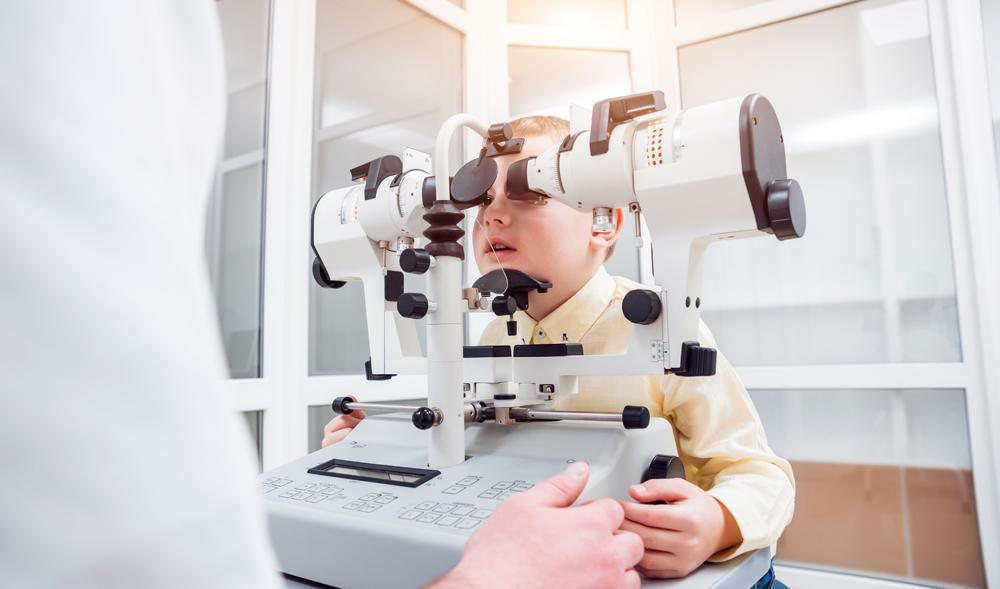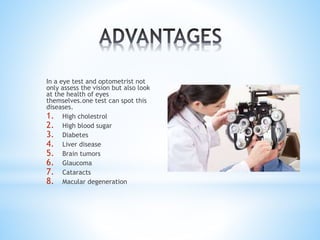The Function of Advanced Diagnostic Equipment in Identifying Eye Disorders
In the world of ophthalmology, the use of innovative diagnostic devices has reinvented the early recognition and monitoring of various eye disorders. As the demand for specific and prompt diagnoses continues to expand, the combination of sophisticated tools like optical coherence tomography and visual field screening has actually come to be crucial in the world of eye care.
Value of Very Early Medical Diagnosis
Early diagnosis plays a crucial duty in the efficient monitoring and therapy of eye problems. Timely recognition of eye conditions is vital as it allows for punctual treatment, potentially preventing further progression of the condition and minimizing lasting problems. By identifying eye conditions at an onset, healthcare carriers can offer suitable therapy plans customized to the particular condition, inevitably bring about better end results for clients. Very early diagnosis allows people to accessibility essential assistance solutions and resources sooner, improving their overall top quality of life.

Modern Technology for Finding Glaucoma
Sophisticated analysis technologies play a vital function in the very early discovery and tracking of glaucoma, a leading cause of irreparable blindness worldwide. Another sophisticated tool is visual area screening, which maps the sensitivity of a person's visual area, helping to find any areas of vision loss feature of glaucoma. These innovative diagnostic devices enable eye doctors to identify glaucoma in its very early stages, enabling for prompt intervention and much better monitoring of the disease to stop vision loss.
Function of Optical Comprehensibility Tomography

OCT's ability to measure retinal nerve fiber layer density Recommended Reading permits accurate Source and unbiased dimensions, helping in the early discovery of glaucoma even prior to visual field issues become evident. OCT modern technology permits longitudinal surveillance of architectural changes over time, helping with individualized therapy strategies and timely interventions to help protect clients' vision. The non-invasive nature of OCT imaging also makes it a favored option for keeping track of glaucoma progression, as it can be repeated on a regular basis without triggering pain to the individual. In general, OCT plays a critical role in improving the diagnostic accuracy and management of glaucoma, ultimately adding to better end results for individuals in danger of vision loss.
Enhancing Diagnosis With Visual Field Screening
An essential part in detailed sensory assessments, visual field screening plays an essential function in improving the diagnostic procedure for different eye conditions. By examining the full extent of a patient's aesthetic field, this test offers essential information concerning the functional stability of the whole aesthetic pathway, from the retina to the visual cortex.
Aesthetic area screening is particularly useful in the medical diagnosis and administration of conditions such as glaucoma, optic nerve problems, and various neurological illness that can influence vision. Via measurable dimensions of outer and central vision, medical professionals can find subtle adjustments that may indicate the existence or progression of these problems, also before visible signs occur.
Furthermore, visual field testing permits check my site the tracking of therapy effectiveness, aiding ophthalmologists tailor therapeutic interventions to individual patients. eyecare near me. By tracking adjustments in visual area performance with time, doctor can make enlightened decisions about adjusting medicines, suggesting medical interventions, or implementing other ideal measures to protect or improve an individual's aesthetic feature
Handling Macular Degeneration

Conclusion
To conclude, advanced diagnostic tools play an essential role in identifying eye disorders early. Technologies such as Optical Comprehensibility Tomography and visual area testing have greatly improved the precision and efficiency of diagnosing conditions like glaucoma and macular deterioration. Early discovery permits timely treatment and management of these conditions, inevitably resulting in better end results for clients. It is essential for health care specialists to remain updated on these developments to offer the finest feasible look after their clients. eyecare near me.
Comments on “Comprehensive Retina Service Near Me: Advanced Eye Health Care”